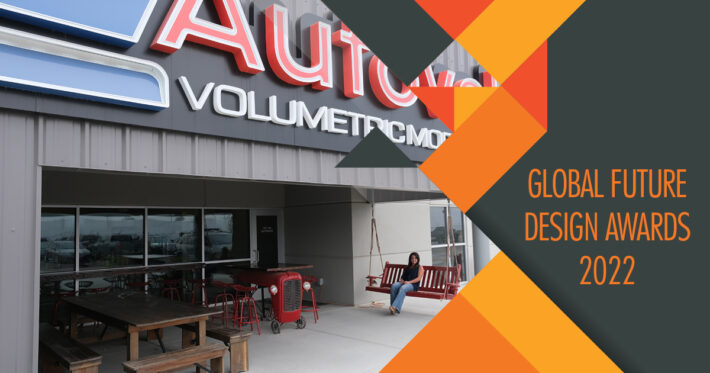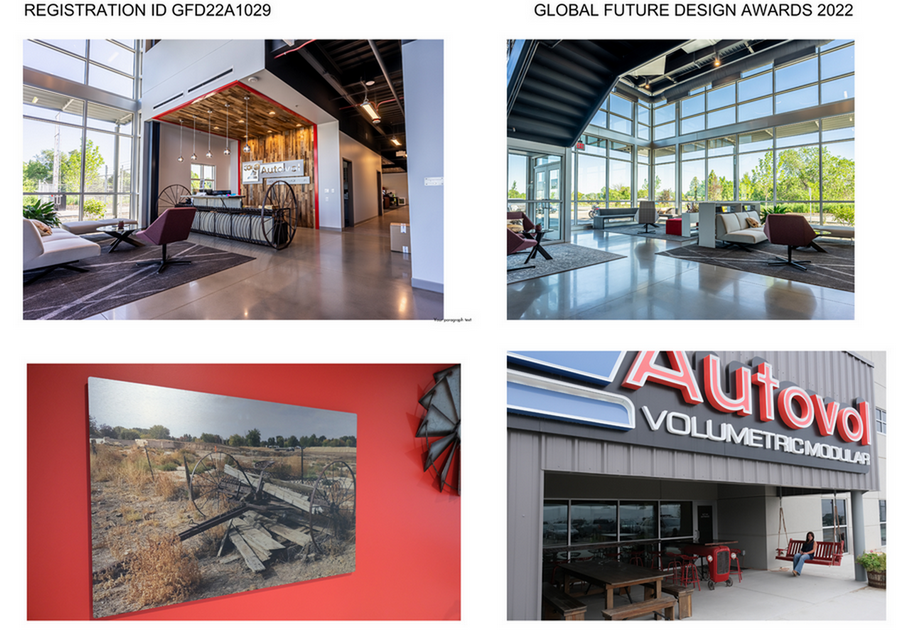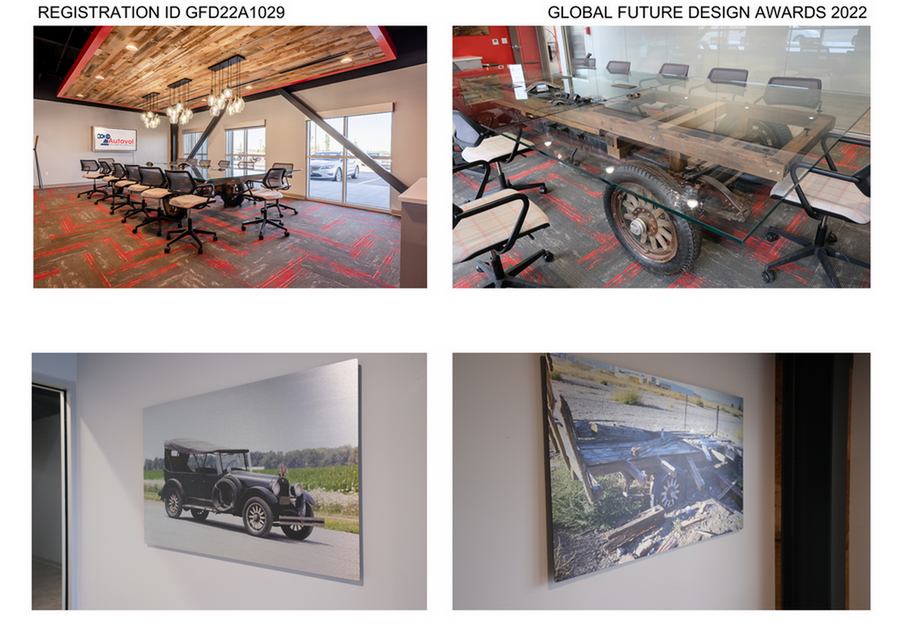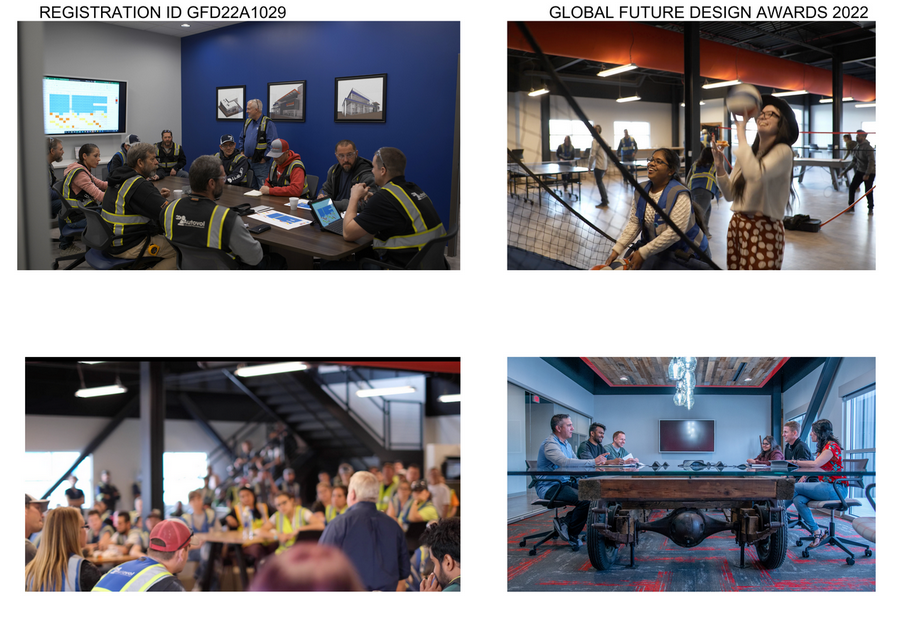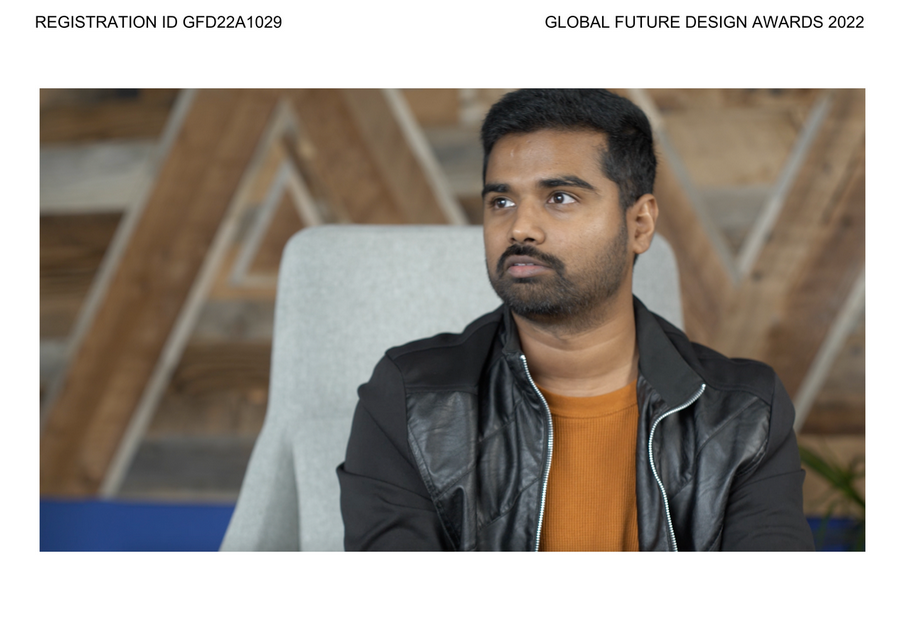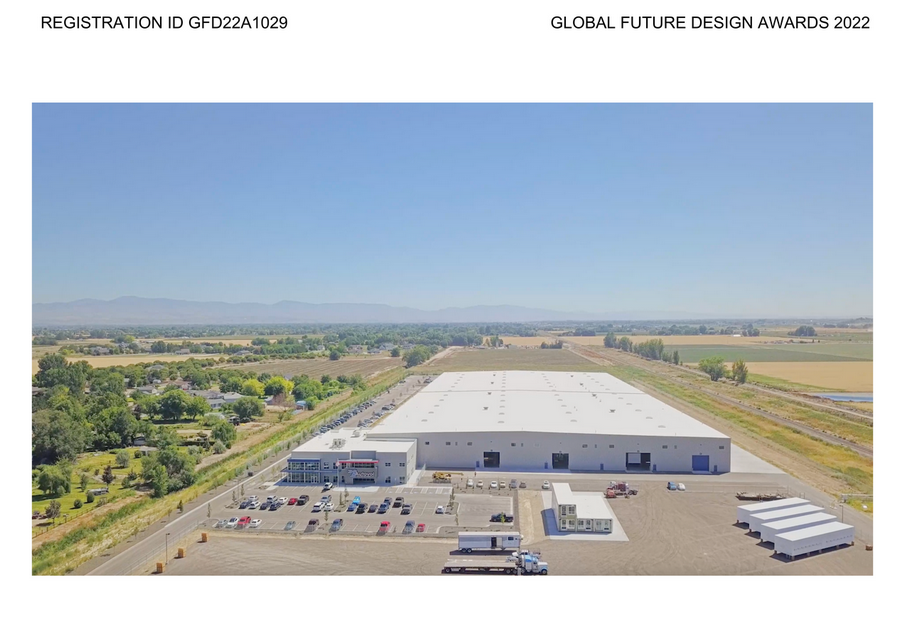Autovol is the world’s most advanced modular construction company, combining people power and first-ever automation to build desperately needed affordable housing. In three years, the company has transformed a 52-acre family farm into the highest-volume offsite producer of multifamily housing in the western U.S. At Autovol, robots take the heavy lifting off of tradespeople who build housing in a centralized facility—keeping the age-old construction trades alive.
Global Future Design Awards 2023: Entries Open!
Gold 🏆 Winner
Global Future Design Awards 2022
Autovol Office and Factory Shared Space
Corporate Interior (Built)
Firm
Autovol
Architect
ZGA Architects
Designer
Merrick Macomber
Design Team
Autovol
Location
16376 Star Road, Nampa, Idaho, USA. 83687
Country
United States
Photographer/Copyright
©Autovol
Autovol was deemed worthy by the family whose final crop of corn was being harvested as the property transfer had already begun. This farm site of more than a century held many treasures of farm history. As the company envisioned its future culture, the design team created an interior concept that paid homage to the past while inspiring a new kind of factory environment.
Autovol is led by some of the world’s most seasoned construction tradespeople. These veterans have engendered equal measures of commitment to keeping the past alive while challenging old ideas with innovation. Automation has proved an ironic key to humanity and liberation. The most advanced construction robotics have helped empower nearly three times the industry average for women, and extended the career life of “Solutioneers” as Autovol calls its industry pioneers who engineer solutions to affordable housing and a thriving work-life.
With all this in mind, Autovol’s employee number 1 worked with ZGA Architects and got started. They enjoined some of the company’s first Solutioneers in the trades to bring farm and factory together, to unite the old and the new, and to create shared workspaces designed to connect people and build culture between the 30,000 square foot office and the connected 400,000 square foot factory.
The property included two houses, three barns, a hay rake, and other rusty implements of yesteryear. A crop trailer held an inspiring surprise beneath its weathered boards. Its frame and wooden-spoked wheels revealed a 1932 Hudson coupe frame. The construction industry’s late-embrace of technology roughly aligns with the 1930s car industry assembly lines. The Hudson became a symbol—and the conference table of the “Hudson Room,” where visitors and Solutioneers have formative conversations as they build a new industry.
The barnwood became a mainstay of ceilings and wall trim. The glass walls and brushed metal trim of the offices reflect transparency and modernity. The hay rake serves as the lobby’s centerpiece. Together, they make multigenerational statements of unity, transparency, respect for the past, and excitement for the future. The hominess and newness blend into feelings of belonging, comfort, innovation, motivation.
The two-story floor plan turns corridors between office and factory into gathering places: a first-floor break room and second-floor game room. Shared walls between factory and office include windows for Solutioneers on either side to see into each other’s spaces and activities.
In its first three years, during a time of labor shortage and growing housing crises, Autovol built nearly 2,000 apartments and two back-to-back best-workplaces awards. The smart, heartfelt sense of place and connection undoubtedly contributed.


